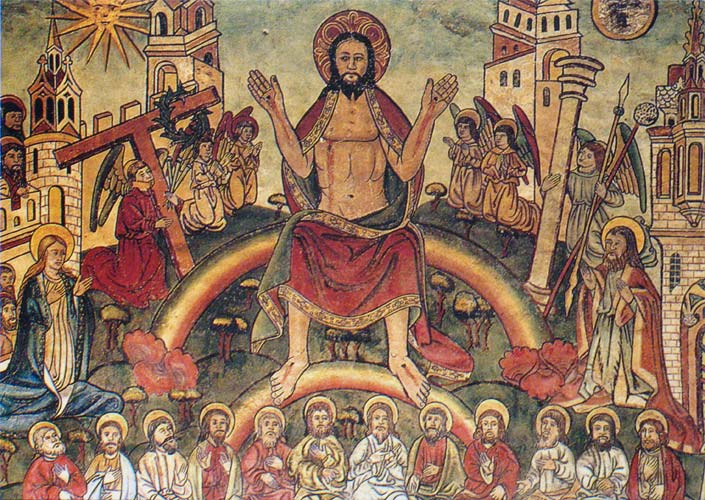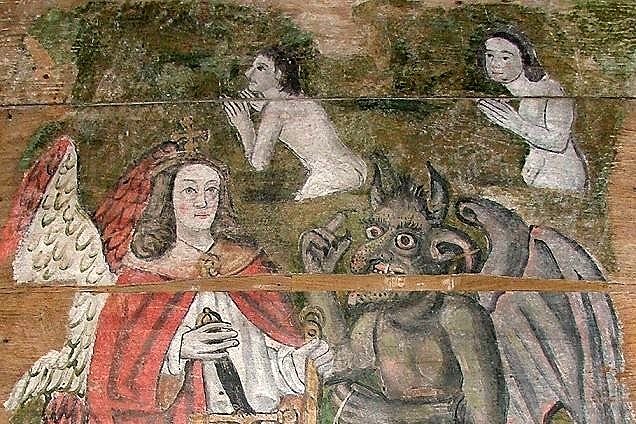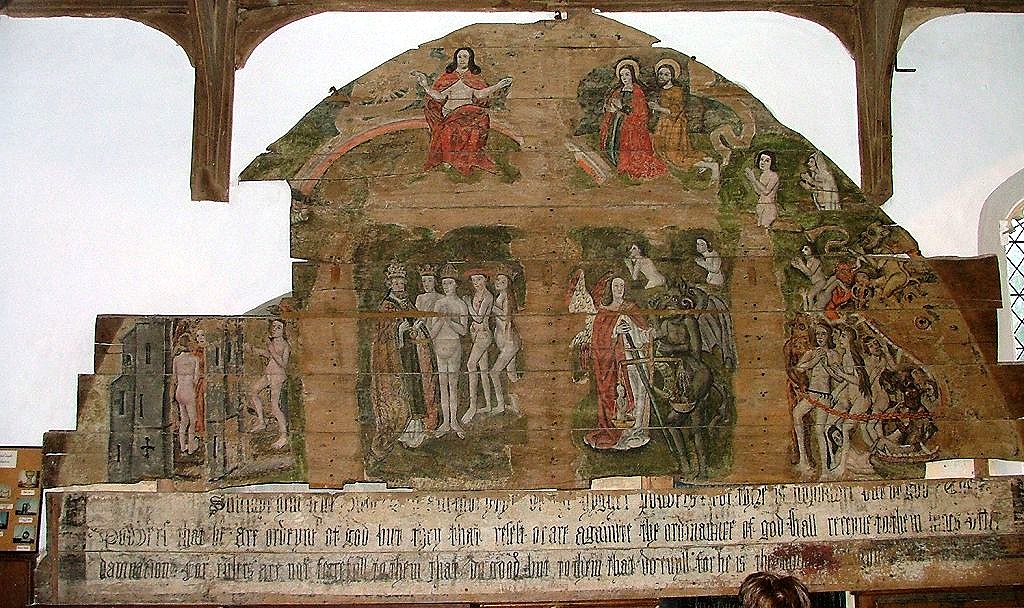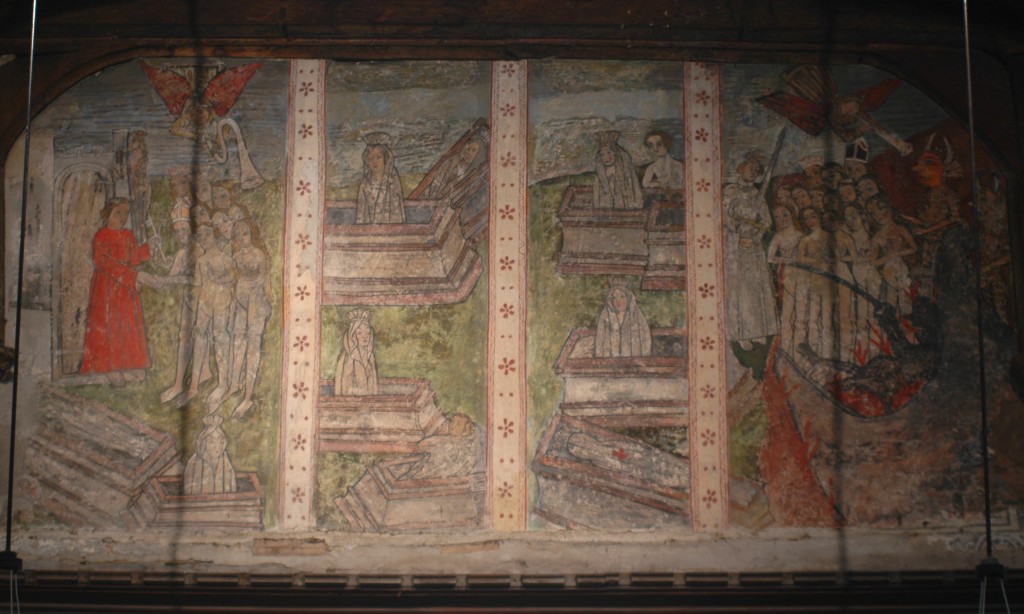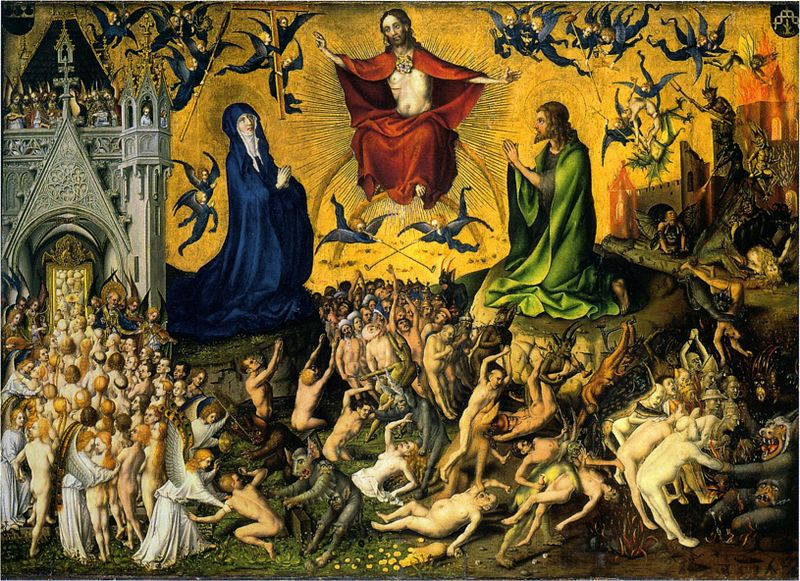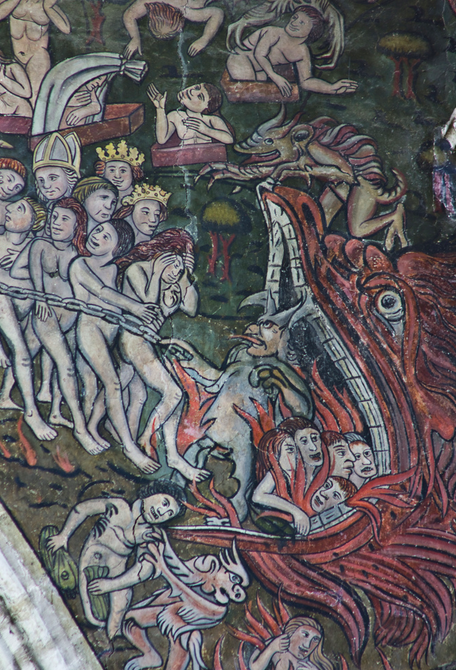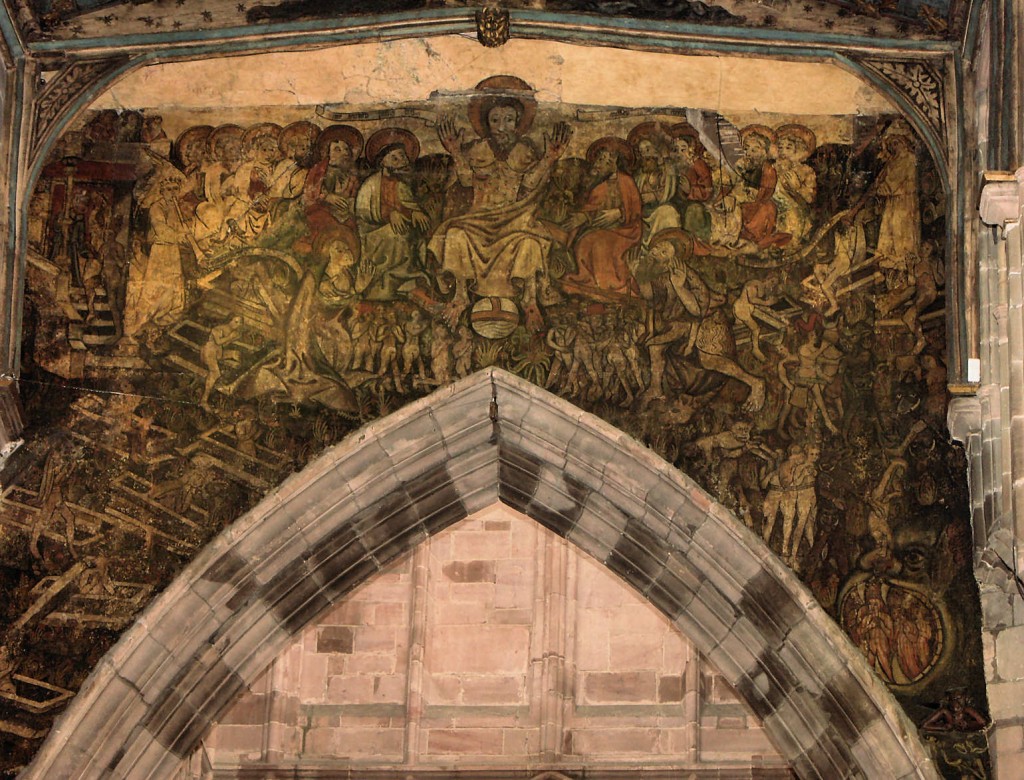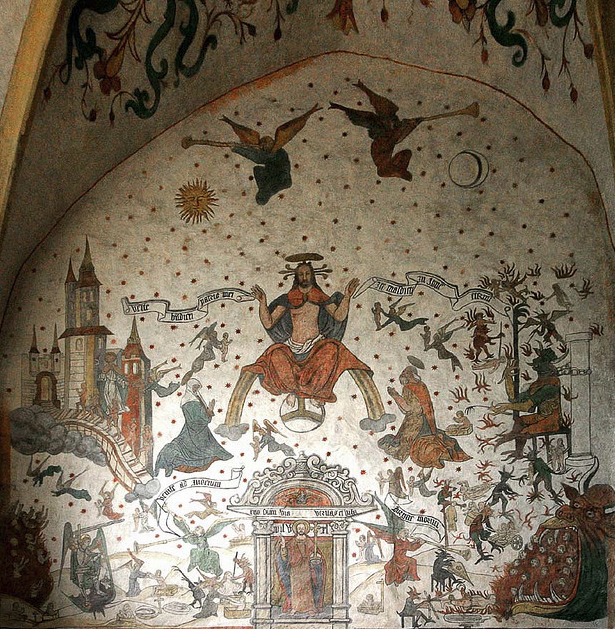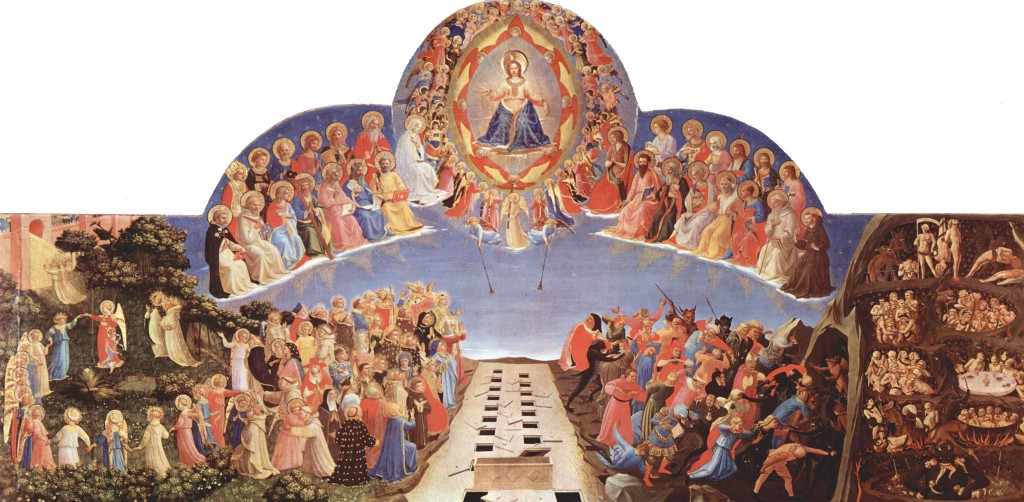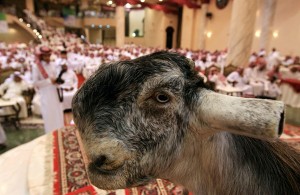Medieval Doom Paintings
Doom paintings, or just simply “dooms” are works of art depicting the Last Judgement. The main function of these impending doom paintings was to put the fear of god into folk who frequented churches. Fear is a wonderful way of keeping people in their place, that’s just as true today as it was in medieval times.
Many of these works depict the Last Judgement. According to the Bible, the Last Judgement will come when Jesus rises again; Jesus will take it upon himself to send all of the “sinners” to hell and the “good folks” to heaven, so you’d better have your story straight by then.
Around the year 1200, a catchier way of saying ‘Last Judgement’ came into use. People would refer to this time simply as “the Doom;” still today, the terminology “doomsday” harkens back to this fear-laden term.
Jesus will separate the “sheep from the goats” – and, by the way, you don’t want to be a goat. This is what Jesus will say to the goats:
“Depart from Me, you cursed, into the everlasting fire prepared for the devil and his angels; for I was hungry and you gave Me no food, I was thirsty and you gave Me no drink, I was a stranger and you did not take Me in, naked and you did not clothe Me, sick and in prison and you did not visit Me.”
And that’s that, down into hell you go, and not just for a fortnight, but for eternity. No reprieve. Nope.
Despite many doom paintings being destroyed during the English Reformation, there are still quite a few left in churches from the 12th and 13th centuries; and they’re pretty awesome.
Doom paintings were generally positioned on the west wall of churches, this ensured that the congregation viewed the terrifying landscapes as they left the church; they served as a last reminder before the normal folk resumed their daily sinning regime. Other times, doom paintings were plonked behind the alter so that members of the church were constantly called to admire the images as they prayed.
The idea was to literally put the fear of god into the congregation, and no doubt it worked. You can imagine that these images, dimly-lit by the flicker of candlelight, would have looked very sinister indeed to the peasants who gazed upon them.
Today, gory art and dark visuals are much easier to come by, so the paintings look a bit tame to our modern blood-hardened brains. But, if you look at these through medieval eyes, you can imagine the effect. Medieval people were not accustomed to art or drawings or pictures or anything other than mud, turnips, plagues and all-day drinking. Not such a bad life if you ask me.
These doom paintings generally have Jesus in the middle with hell on one side and heaven on the other. Other popular characters that put in an appearance are good old Virgin Mary, Archangel Michael and John the Apostle. Alongside these main actors you have devils and demons, fire, sets of scales and looks of pain and anguish.
Medieval art has a child like feel to it, and when adult themes clash with this innocence there’s something a bit unnerving about it.
MORE MEDIEVAL MAYHEM:
WEIRDEST MEDIEVAL MANUSCRIPT ART
HERSTMONCEUX MEDIEVAL FESTIVAL

